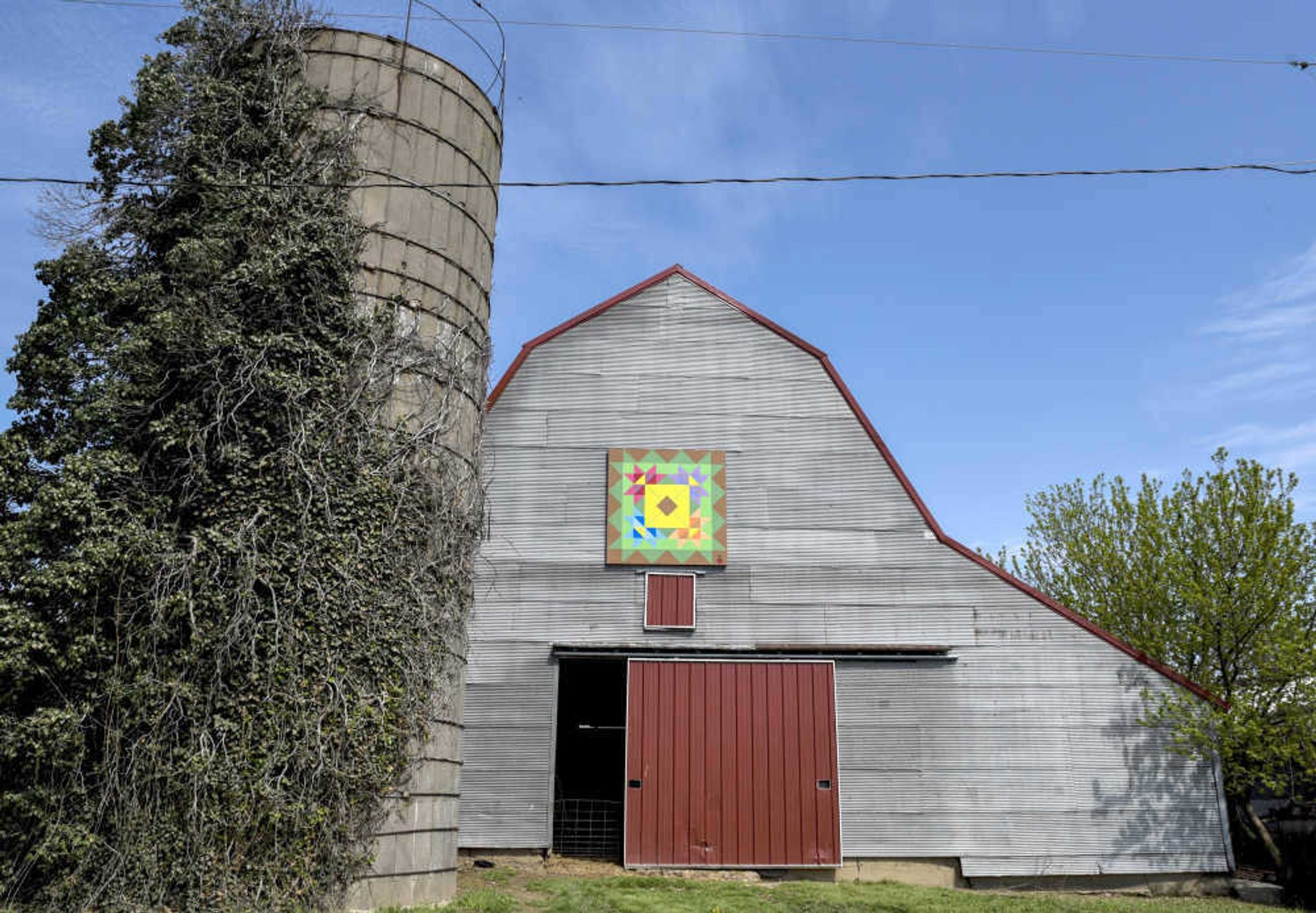From Bed Turnings to Barn Trails
FROM BED TURNINGS TO BARN TRAILS A brief history of quilts By Mary Koeberl Rechenberg Have you taken a drive in the country lately and noticed colorful squares on barns and sheds that look like quilt blocks? More and more are popping up over the countryside in Southeast Missouri. ...
A brief history of quilts
Have you taken a drive in the country lately and noticed colorful squares on barns and sheds that look like quilt blocks? More and more are popping up over the countryside in Southeast Missouri. These bright splashes of color are called barn quilts, and Janet Koenig of Perry County has done her best to make the Perry County Barn Quilt Trail a unique adventure honoring an art form dating back to the founding of America.
Quilts and quilting have quite a history. Long before the settlement of the West, quilts played an important role in Americans’ lives. Warm quilts were a very necessary item in early American homes and on the frontier. The craft of quilting continues to be an expression of beauty, artistry and a labor of love today.

In pioneer days, the need for warm, sturdy quilts kept the women of the house busy. The task of cutting and sewing bits of fabric into quilts was done many times, with no design in mind. The women would use any available scraps of cloth, whether it was new material or used fabric from garments that were no longer wearable. Basic everyday quilts were created out of heavy woolen or cotton cloth. Colorful cloth from flour and feed sacks were used in quilts and dressmaking as late as the 1960s. As fabric became more available in the West, quilts were pieced from bits of velvet, taffeta and silk.

American folklore includes stories about African-American slaves using quilts hung on clotheslines and over window sills and fences as a code, giving directions to runaway slaves. Each quilt pattern held a special meaning to the escapees as a means to safety and freedom.
Cold winters and drafty houses meant many quilts and blankets were needed in each household. Therefore, quilting could be a very time-consuming task. To make the hours of work go faster and be more fun, several ladies within traveling distance would get together for quilting bees. As they sat around the quilt and their fingers stitched the short, even stitches, they would laugh and visit, catching up on the latest gossip. With many ladies working together, the often-tiresome task became a joyous occasion. They exchanged ideas as to how best they could use the materials they had, and they would trade their designs and fabric scraps with each other.

To keep track of the designs, they gave them names representing something in the family, home or surroundings, something from the Bible or their method of arranging the pieces. Blazing Star, Goose Tracks, Bear Claw, Dutchman’s Breeches, Log Cabin, Bowtie and Jacob’s Ladder are just a few quilt block pattern names that have been in use for more than 100 years.
A social event known as a bed turning was often hosted in homes as a way of sharing different quilt patterns and designs. The lady of the house might serve her favorite cookies or cake as her guests sat around a bed piled high with quilts. As each quilt was held up for viewing, the quilter explained the pattern, how it was made and what it represented.
Today, the number of hours involved in finishing a hand-quilted quilt and the skills needed are not always available. As more women are in the workplace in today’s world, making handmade quilts may not be something they can do, and most people don’t know what a bed-turning is. However, people can still appreciate the beautiful colors and unique designs of quilts.
Back around the year 2000, Donna Groves of Adams County, Ohio, came up with the idea of painting a quilt block design to honor her mother and her Appalachian heritage. Eventually, her idea grew into displaying quilt blocks on barns and other buildings in her county.
Koenig, a retired nurse, former quilter and artist, decided some time back to try her hand at creating a barn quilt. It wasn’t long before she was taking orders from people who also wanted barn quilts. All this was inspiration to form The Perry County Barn Quilt Trail, a self-guided tour of barn quilts in Perry County, Northern Cape Girardeau County and Northern Bollinger County.
After designing and painting several barn quilts, Perry County Heritage Tourism made a map showing the places where the barn quilts are located and the name of each quilt design. Koenig has now painted 87 barn quilts; not all can be viewed on the trail. An updated map of the Perry County Barn Quilt Trail, including new barn quilts recently painted by Koenig, became available in January 2020. For more information, visit Perry County Barn Quilt Trail on Facebook.com or contact Perry County Heritage Tourism at (573) 517-2069.
Connect with the Southeast Missourian Newsroom:
For corrections to this story or other insights for the editor, click here. To submit a letter to the editor, click here. To learn about the Southeast Missourian’s AI Policy, click here.










